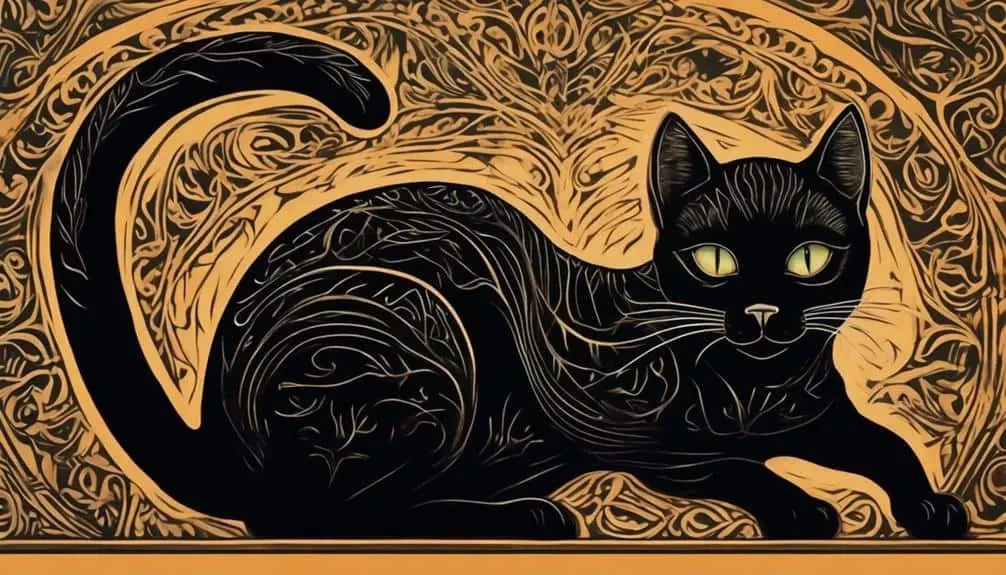The Best Fluffy Pancakes recipe you will fall in love with. Full of tips and tricks to help you make the best pancakes.

Like a mysterious shadow lurking in the depths of your feline friend's spine, scoliosis in cats raises questions that demand answers. You've noticed a subtle change in their posture, a slight tilt to their steps, and it has left you perplexed and concerned. What secrets lie behind this enigmatic condition? How can you unravel its mysteries and provide the best care for your beloved companion?
In the following discussion, we will shed light on the signs, causes, detection, treatment, and care tips for cats with scoliosis, guiding you through the labyrinth of uncertainty to find the answers you seek.
Key Takeaways
- Scoliosis in cats can be visually detected by observing a lateral curvature of the spine.
- It can also be detected through physical examinations, such as feeling for modifications along the cat's back and monitoring changes in posture and gait.
- X-rays are commonly used to diagnose scoliosis in cats, and other diagnostic tests may be performed to assess the severity of the condition.
- Treatment for scoliosis in cats can range from physiotherapy and medication for mild cases to surgical intervention for severe cases. Care should be taken to maintain optimal weight and create a safe environment for cats with scoliosis.
Signs and Causes of Scoliosis in Cats
Scoliosis in cats is characterized by a visible curvature of the spine when they're lying down or standing. It can be caused by various factors such as congenital anomalies, trauma, inflammation, or degenerative diseases.
Scoliosis management is crucial in preventing scoliosis progression and ensuring the well-being of your feline companion. It's essential to be vigilant and observe any signs of scoliosis, including difficulty walking or running, uneven gait, and breathing problems. If you notice any of these symptoms, it's important to consult a veterinarian for proper diagnosis and treatment options.
Treatment may involve physiotherapy or surgical intervention, depending on the severity of the condition. Additionally, creating a safe environment for your cat and maintaining its optimal weight are important factors in preventing the worsening of scoliosis.
Detection of Scoliosis in Cats
To properly detect scoliosis in cats, it's important to be attentive to any changes in their posture, gait, and sensitivity to touch, as these may indicate the presence of a lateral curvature in their spine. Diagnostic methods for scoliosis in cats include:
- Visually observing the curvature of the spine
- Feeling for any modifications along the cat's back
- Monitoring changes in posture and gait
- Noticing pain when touching certain areas
Early intervention is crucial in managing scoliosis and preventing further complications. If you notice any abnormalities in your cat's behavior or physical appearance, it's recommended to consult a veterinarian for proper diagnosis and treatment.
Treatment for Scoliosis in Cats
Treatment options for cats with scoliosis vary depending on the severity of the condition and may include physiotherapy, surgical intervention, and medication.
In mild cases, physiotherapy and kinesiotherapy may be recommended to improve muscle strength, flexibility, and overall function. These rehabilitation options aim to minimize pain, enhance mobility, and prevent further progression of the condition.
However, for severe cases of scoliosis, surgical intervention may be necessary to straighten and stabilize the spine. During surgery, metal rods and screws may be used to correct the curvature and provide support.
Additionally, anti-inflammatory and anti-pain medication may be prescribed to alleviate clinical signs.
It's important to consult with a veterinarian to determine the most appropriate treatment plan based on the individual cat's condition.
Care Tips for Cats With Scoliosis
To provide the best care for cats with scoliosis, it's important to implement certain measures to ensure their safety and well-being. Here are some supportive and preventive measures you can take:
- Maintain optimal weight: Keeping your cat at a healthy weight is crucial to prevent worsening of the condition and reduce strain on the spine.
- Create a safe environment: Set up barriers and ramps around the house to prevent falls and make it easier for your cat to walk and navigate.
- Seek veterinary help: If you notice any worsening of the condition or new clinical signs, it's important to consult your veterinarian for proper evaluation and guidance.
- Follow treatment directions: It's essential to adhere to the treatment plan provided by your veterinarian, which may include medication, physiotherapy, or surgical intervention.
Additional Information on Scoliosis in Cats
As we explore further into the topic of scoliosis in cats, let's delve into additional information that sheds light on this rare spinal defect.
Scoliosis in cats is a congenital condition, and genetic factors may play a role in its development. While the exact cause is unknown, it's believed that certain genetic abnormalities contribute to the development of scoliosis. Injuries or trauma to the spine can also contribute to the condition.
Cats with scoliosis may experience pain or discomfort, and the management of pain is an important aspect of their care. Veterinarians may prescribe anti-inflammatory and anti-pain medications to alleviate clinical signs.
Additionally, creating a safe environment for cats with scoliosis, including setting up barriers and ramps, can help prevent falls and ease their walking.
Conclusion
In conclusion, scoliosis in cats is a rare condition that can cause noticeable deformity and mobility issues. It's important to consult a veterinarian if you suspect your cat may have scoliosis, as early detection and treatment can greatly improve their quality of life.
Interestingly, studies have shown that scoliosis affects approximately 0.5% of feline population, highlighting the need for awareness and understanding of this mysterious condition.
By following the recommended care tips, you can provide the best possible support for your feline companion with scoliosis.








